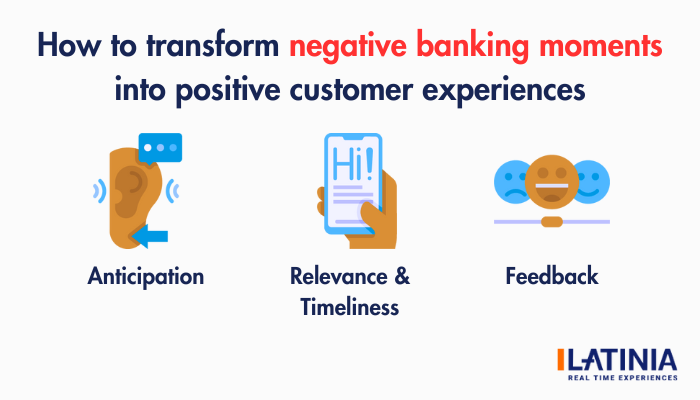
The 24/7 Nature of a Customer’s Finances
In today’s fast-paced digital age, customers’ financial lives never sleep. Whether they’re shopping online at midnight, making international transfers in the wee hours, or checking their account balances first thing in the morning, their financial activities span across the clock.
This 24/7 nature of personal finances implies a constant demand on banking call centers, which now face an increasing volume of calls from customers needing assistance at unconventional hours.
But with this round-the-clock activity comes a set of challenges. Banks need to ensure that they are adequately staffed and equipped to handle their customers’ diverse and spontaneous needs.
Today’s banking always-on nature demands a shift from traditional reactive service models to more proactive ones, where potential issues are identified and addressed before they escalate into bigger problems.
The Demand for Proactivity in Modern Banking
Modern banking customers are not just looking for solutions to their problems; they’re looking for banks that can anticipate those problems in the first place. One of the attributes they value most is proactivity. Gone are the days when customers were content with mere problem-solving. Today, as call centers grapple with increasing call volumes, the need for proactive solutions becomes even more pronounced.
According to Zippia, 77% of customers appreciate proactive customer service.
Customers expect their banks to detect potential hiccups in advance and offer timely solutions, reducing the frequency with which they find themselves dialing the call center. Their increasing frustrations with long wait times or repeated calls for unresolved issues underscore the importance of this proactive approach.
The rising demand for proactive services isn’t just a trend; it’s a testament to the evolving expectations of banking customers. They want their banks to be more than just financial institutions; they want them to be financial partners. These partners should be so in sync with their needs and habits that they can anticipate potential issues and act on them before they become disruptions and, more importantly, before they lead to another call to the center.
In essence, the modern banking landscape is shaped by customers’ desire for convenience, efficiency, and a sense of partnership with their banks.
With call centers being the frontline of customer interactions, the emphasis on reducing their volume while enhancing the quality of service has never been more pivotal.
Primary Causes of High Call Volumes
Banking call centers serve as vital touchpoints, addressing various customer concerns every day. However, the increasing call volumes can strain these centers, affecting their efficiency and the overall customer experience.
Understanding the primary causes is the first step. With this knowledge, banks can begin crafting strategies, leveraging technology and digital transformation to address these concerns proactively, ultimately aiming to enhance customer satisfaction while reducing the pressure on call centers.
Card Issues
Every day, millions of transactions are processed using credit and debit cards, making them central to the banking experience. Yet, with this frequency comes a plethora of concerns that lead customers to pick up their phones:
- Expired cards: Often, customers aren’t aware that their card is about to expire, leading to declined transactions and a hurried call to the bank.
- Foreign transactions: Traveling abroad without notifying the bank can trigger security protocols, freezing the card and prompting immediate customer queries.
- Credit limits: Unknowingly reaching or exceeding the credit limit can result in declined transactions, causing panic and immediate calls to understand why.
- Blocked cards: Whether due to suspected fraudulent activities or entering an incorrect PIN multiple times, blocked cards are a common reason for call center interactions.
- Card Renovations: Frequent queries arise about the process of card renewals. Customers often seek clarity on the automatic issuance, potential fees, and changes in card features. Proactive communication about renewals can diminish related call center interactions.

Account Issues
These are among the most frequent concerns customers have, driving significant call center traffic:
- Balance inquiries: While many use online portals, a significant number of customers still prefer to call and check their account balances.
- Overdraft alerts: Unexpected overdrafts can cause alarm, especially if the customer wasn’t anticipating a particular charge.
- Unauthorized transactions: Spotting a transaction that the customer doesn’t recognize, especially if it’s a large sum, can lead to immediate calls for clarification and resolution.
Online Banking Access
In our digital age, online banking is a convenience many rely on. But issues here directly translate to call center traffic:
- Forgotten passwords: This is perhaps one of the most common issues, with customers calling in for password resets.
- Locked accounts: Multiple failed login attempts can lock an account, causing concern and an immediate call to resolve the issue.
Loan and Mortgage Inquiries
Loans and mortgages represent significant financial commitments, and any concerns here can lead to immediate calls:
- Application status: Applicants keen to know the status of their loan or mortgage application may call for updates.
- Repayment queries: Confusions regarding repayment amounts, dates, or methods can lead customers to seek clarity.
- Interest rate concerns: With fluctuating interest rates, customers might call in to understand how these changes impact their loan repayments.
Fees and Charges
Banking is replete with various fees and charges, some of which might catch customers off-guard:
- Service fees: If not appropriately communicated, monthly account maintenance fees or other service charges can lead to surprised and disgruntled customers.
- Transaction charges: Fees associated with foreign transactions, ATM withdrawals, or other services can prompt calls if the customer wasn’t expecting them.
- Disputes: In cases where customers believe they’ve been wrongly charged, they’ll call to dispute the fee.

Addressing Key Banking Issues Proactively to Reduce Calls
The aforementioned situations, among others, present banks with a golden opportunity – the chance to prove their commitment to customers by taking anticipatory actions.
Acting in advance on these common banking situations can also lead to a drastic reduction in call volumes:
- Automated Alerts: Triggers for standard banking issues can send out timely alerts. For instance, alerting a customer of an imminent card expiration can prevent a flurry of calls from those unaware of the situation.
- Intelligent Recommendations: Modern analytics can suggest solutions to the customer. If a customer’s pattern suggests they frequently hit their credit limit, recommending a tailored credit product or limit adjustment can preempt calls related to credit limit issues.
- Interactive Platforms: Enhanced banking apps with integrated chatbots can provide instant solutions to frequent queries. A query resolved via chat is a call avoided.
The essence of proactive banking lies in understanding and predicting customer needs. By integrating technology and data insights, banks can move beyond traditional customer service paradigms and establish themselves as true customer-centric entities.
Digital Transformation & Customer Experience
Diversifying the CX Strategy through Digitalization
Digital transformation is more than just a buzzword in today’s banking landscape; it’s necessary. The surge in digital banking users and the proliferation of mobile banking apps have pushed banks to rethink their customer experience (CX) strategies. With the increasing call volumes in banking call centers, diversifying and improving the CX strategy is paramount.
Digitalization offers banks many tools and platforms to interact with their customers, extending far beyond the confines of physical branches or call centers. Leveraging these digital tools can help:
- Streamline Services: With automation and AI, repetitive tasks such as balance inquiries can be managed without human intervention, reducing the strain on call centers.
- Personalize Interactions: Banks can offer tailor-made services and products using data analytics, anticipating customer needs before they escalate into issues.
- Enhance Accessibility: With mobile apps and online portals, customers can address many of their queries instantly, thus reducing the reasons they might need to call.
Digitalization has opened up new opportunities for banks to perform such a service while diversifying their Customer Experience Strategy. As Oriol Ros, Director of Corporate Development at Latinia, says, “Responding in real time to what is happening in customers’ finances, and not just when they are interacting within the bank’s channels makes it possible to anticipate customers’ needs, which is one of the challenges that banks must address and is a place where the use of technology is fundamental and effective.”
It’s not just about interaction within the bank’s channels but about being omnipresent in the customer’s financial journey.
Ros emphasizes the challenge banks face: anticipating customers’ needs using technology. Being proactive, as opposed to reactive, reduces the pressure on call centers and strengthens the trust between the bank and its customers.
In this scenario, technology isn’t just an enabler; it’s a game-changer.
The Power of Real-Time Complex Event Processing in Communications
Modern banking is no longer confined to traditional, reactive customer service methods. The intersection of technology, data analytics, and user demands has pushed banks into a new era where the speed of response is crucial.
In this section, we delve deep into the transformative power of real-time Complex Event Processing (CEP) and how it influences the banking experience.
Transforming Negative Moments into Positive Customer Experiences

- Anticipating Customer Needs: Banks can proactively address concerns by analyzing transactional data in real time. Imagine a situation where a customer’s transaction gets declined at a point-of-sale due to insufficient funds. Rather than waiting for a frustrated call from the customer, the bank immediately sends a friendly notification with suggestions, such as transferring funds from savings or offering a temporary overdraft. The earlier disappointment is now a testament to the bank’s attentiveness.
- Relevance and Timeliness: CEP Communications ensures the relevance of banks communications with customers at the most opportune moments. For instance, if a customer is making a high-value transaction, offering an instant credit opportunity or a short-term loan option at that very moment can prove valuable.
- Feedback Loop: Continuous data analysis means banks can adjust their services based on actual customer behavior. Real-time analysis can flag a service or feature for rapid resolution if a certain service or feature sees frequent issues.

The Importance of Real-Time Responses to Customer Financial Activities
Financial decisions, more often than not, are time-sensitive. Delays can result in financial loss, missed opportunities, or heightened stress for the customer. Here’s why real-time responses are pivotal:
- Instant Issue Resolution: The faster a bank can address a customer’s concern, the higher the satisfaction. With real-time monitoring, banks can often solve problems before a customer even notices them and calls the call center.
- Building Trust: When customers know their bank is constantly monitoring and looking for their best interests, it fosters a deeper sense of trust and loyalty.
- Optimized Financial Health: Real-time alerts about potential overdrafts, due payments, or better investment opportunities can guide customers to make informed financial decisions.
Action plan for Reducing the Volume of Calls to Call Centers
The banking sector cannot afford to lag in a world dominated by instant gratification. This is where solutions like those provided by Latinia come into play. As developers of real-time decision-making and communication software products for the financial sector, Latinia stands at the forefront of this digital shift.
Our expertise in filtering and analyzing transactional events and customer intelligence data allows banks to leap from being mere transactional entities to becoming integral parts of their customers’ daily lives.
As Juliana Ortiz, Head of Customer Success at Latinia, points out, “Latinia can assist specifically in providing an effective response in the times our customer needs us most, and as a result, reduces the burden on call centers and significantly improves our clients’ experience.”
By offering insights in real-time, Latinia’s tools empower banks not just to resolve but anticipate and preempt potential pain points, thus further reducing the burden on call centers.
Let’s look at some examples of how we can turn a negative situation into a positive customer experience: when a client is unable to make a payment with their card because they have unknowingly reached their credit limit; the customer doesn’t know why they can’t use their card, but the bank does, and can appear at that very instant to provide the customer with a solution. Or how many times have we found ourselves trying to pay with an expired card?

As another example, instead of a customer realizing they are about to overdraft and making a panicked call to the bank, Latinia’s solutions could alert the bank in real time. The bank could then proactively reach out to the customer with possible solutions, whether an overdraft protection service or a timely funds transfer. Such proactive measures can significantly reduce stress for the customer and the call volume for the center.
These are the moments when we need our bank to tell us why we can’t use our card and offer us a solution.
In this sense, our real-time decision engine NBA (Next Best Action) is a handy tool to boost banking proactivity, taking advantage of customer information to anticipate problems that may arise and help them avoid contacting the bank’s call center.
Latinia’s Next Best Action (NBA) engine exemplifies the paradigm shift in customer service. How does it stand out?
- Personalization at its Best: The NBA engine doesn’t just analyze data; it contextualizes it, offering personalized advice, notifications, or solutions to each customer based on their specific financial behaviors and needs.
- Seamless Integration: Latinia’s solution integrates effortlessly with a bank’s existing systems, ensuring that the transition to a real-time analysis model is smooth and does not disrupt existing workflows.
- Future-Ready: As the financial world continues to evolve, so does Latinia’s NBA. It’s designed to adapt and grow, ensuring banks are always ahead of the curve in offering unparalleled customer experiences.
The culmination of data, technology, and customer-centric strategies promises a transformative banking experience. Real-time analysis isn’t just a feature—it’s a necessity in the competitive landscape of modern banking.
“Real-time analysis of customer transactions opens up endless possibilities to be proactive in moments when customers really need us, showing them that their bank knows what is going on and is offering a solution before the customer has had to contact a call center that may only resolve the issue after going through the necessary interrogation to open the call,” concludes Juliana.
Her insights highlight the transition of banking from a reactive to a proactive industry, where customer needs are anticipated and met with precision and timeliness. With experts like Juliana leading the charge, the future of proactive banking looks promising.

Benefits for Call Center Managers
Addressing the banking sector’s challenges proactively, especially with tools like real-time alerts and predictive analysis, directly aligns with the day-to-day objectives of call center managers.
For these professionals, the ultimate goal is not just about call resolutions but ensuring that the calls never arise in the first place. By doing so, banks not only enhance the customer experience but also reap tangible rewards in operational efficiency. Here are the primary benefits call center managers can expect:
Increased Efficiency and Cost Reduction
- Reduced Call Volumes: With the implementation of proactive strategies, fewer customers feel the need to contact the bank. This directly reduces the demand on call center agents, allowing them to focus on more complex customer inquiries that cannot be resolved through automated or preemptive means.
- Optimized Staff Allocation: A reduction in calls means call center managers can allocate resources more efficiently, potentially saving on overhead costs associated with handling high volumes of calls.
- Training Efficiency: With fewer calls to handle, training can become more specialized, focusing on deeper customer relationship management rather than handling high-frequency, common queries.
Improved Customer Satisfaction
- Fewer Complaints: Proactively resolving common issues translates to fewer disgruntled customers. Customers’ overall satisfaction increases when they don’t need to contact the bank for minor issues.
- Enhanced Customer Perception: Customers value institutions that anticipate and address their needs. When a bank takes measures to prevent common problems, it enhances its image as a customer-centric organization.
- Quicker Resolutions: Those calls that do come through tend to be resolved faster, given that the more routine issues are already being handled proactively. This results in shorter call times and higher customer satisfaction ratings.
Competitive Positioning in the Banking Market
- Differentiation: In a saturated banking market, being known as the bank that “understands and anticipates customer needs” can be a powerful differentiator.
- Customer Retention: A proactive approach to addressing customer concerns can lead to higher loyalty levels. Customers are less likely to switch banks if they feel their current institution understands and caters to their needs effectively.
- Positive Word of Mouth: Happy customers often become ambassadors for the bank, leading to organic growth and referrals. When customers feel cared for, they’re more likely to recommend the bank to friends and family.
Conclusions
The benefits of a proactive approach in the banking industry are clear for call center managers. Beyond the immediate benefits of reduced call volumes and cost savings, the long-term advantages in customer satisfaction and market positioning cannot be overstated.
By embracing a proactive strategy, banks can set themselves apart in an ever-competitive market while ensuring their call centers operate at peak efficiency.
You can transform your call center into a powerhouse of efficiency and customer satisfaction. Contact us now and let Latinia guide you to a future of seamless banking communications following a proactive strategy.


